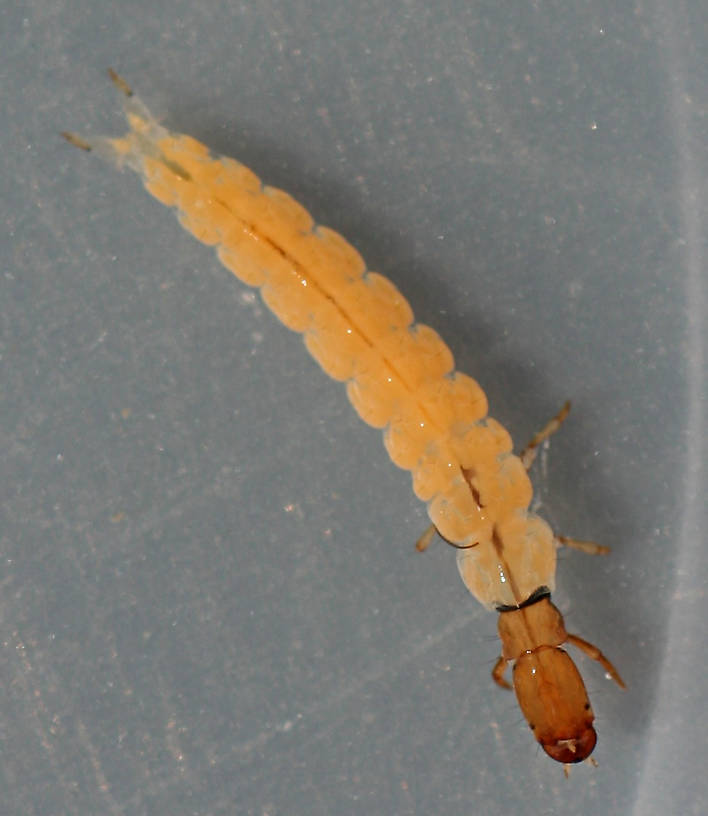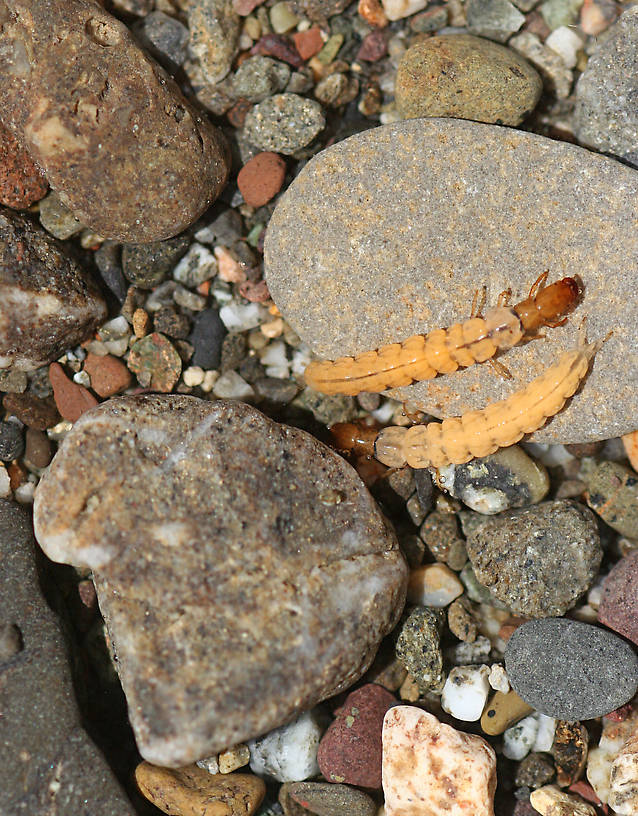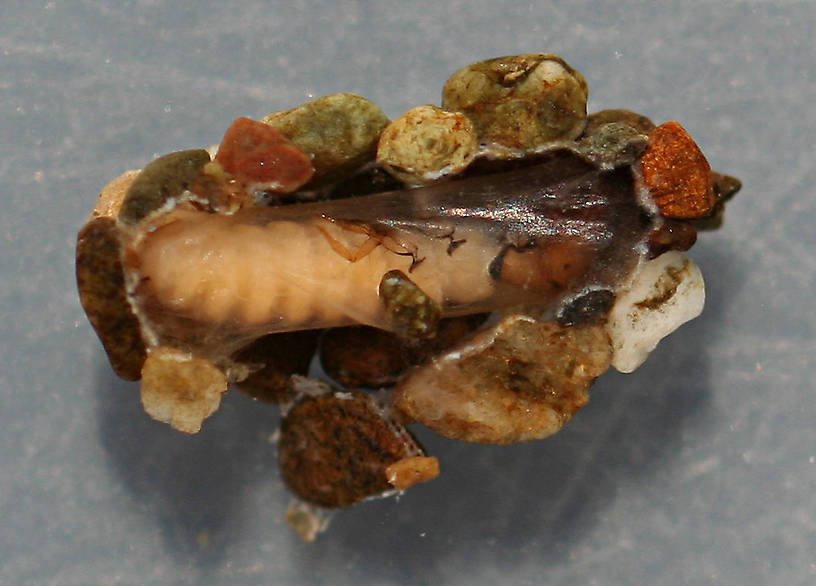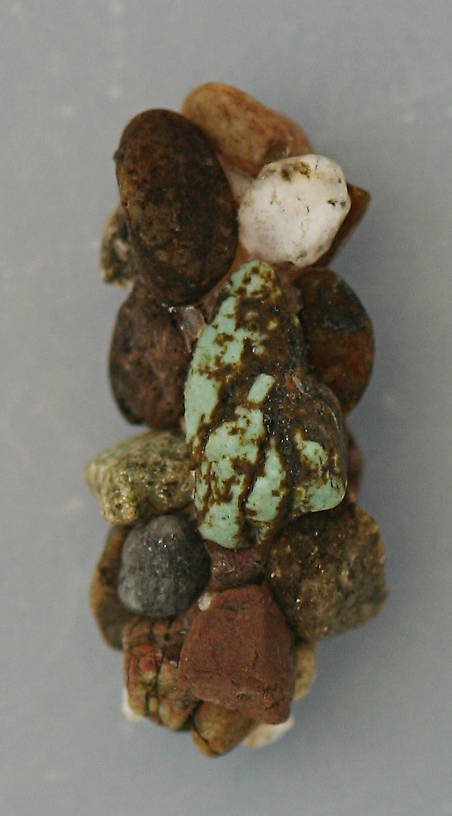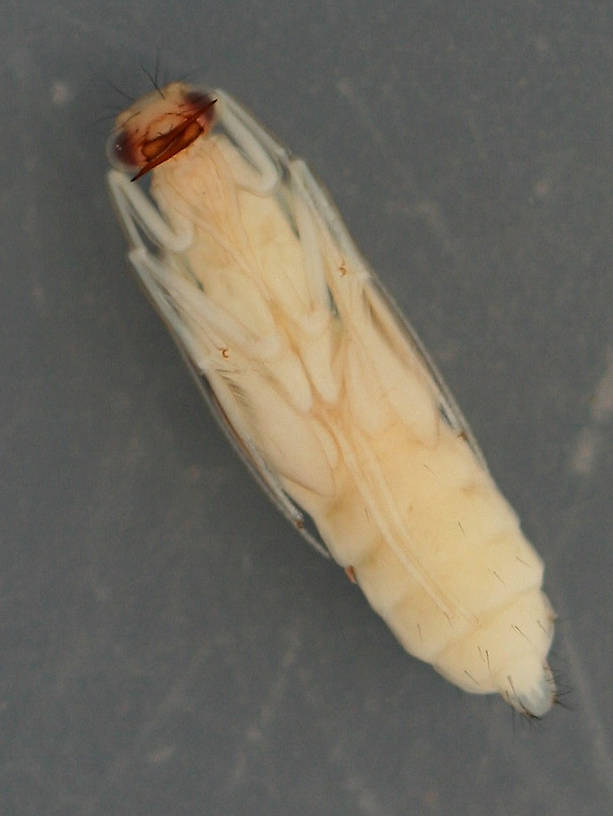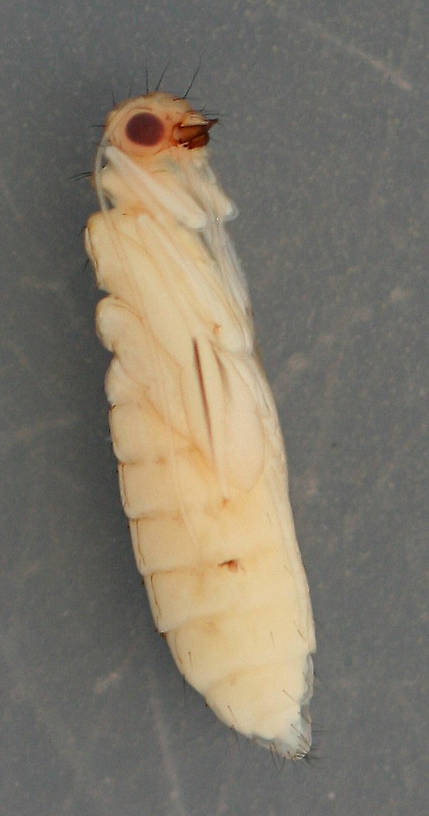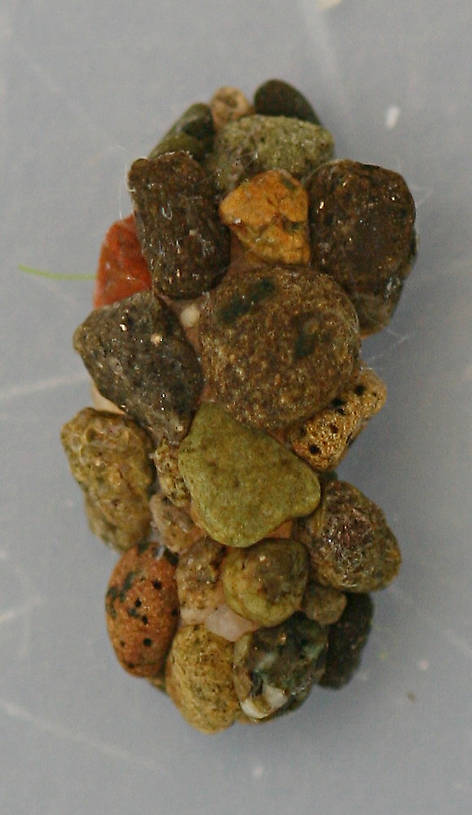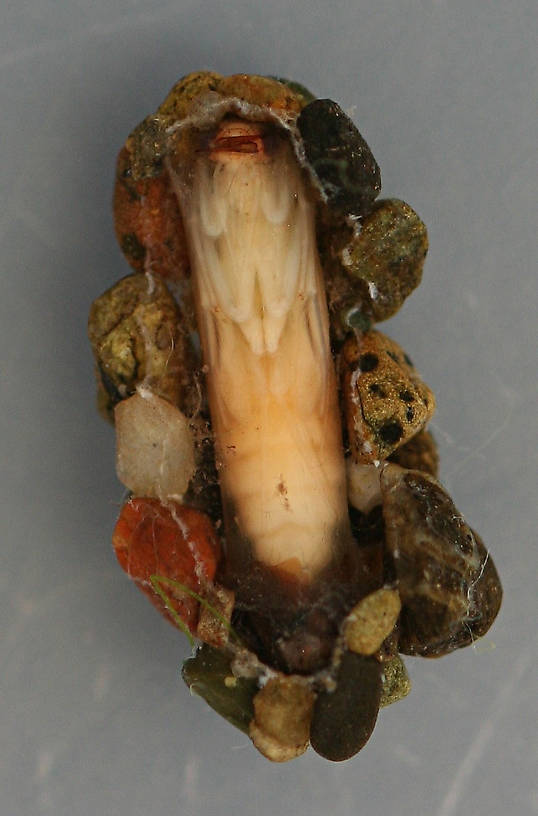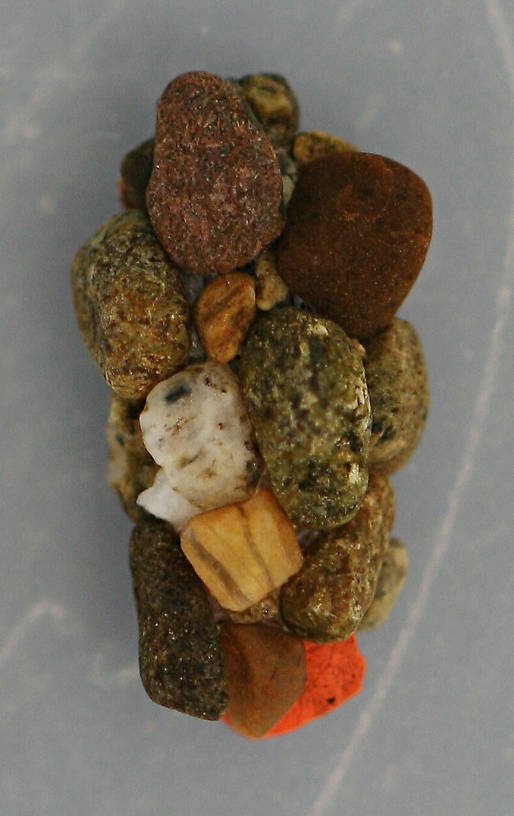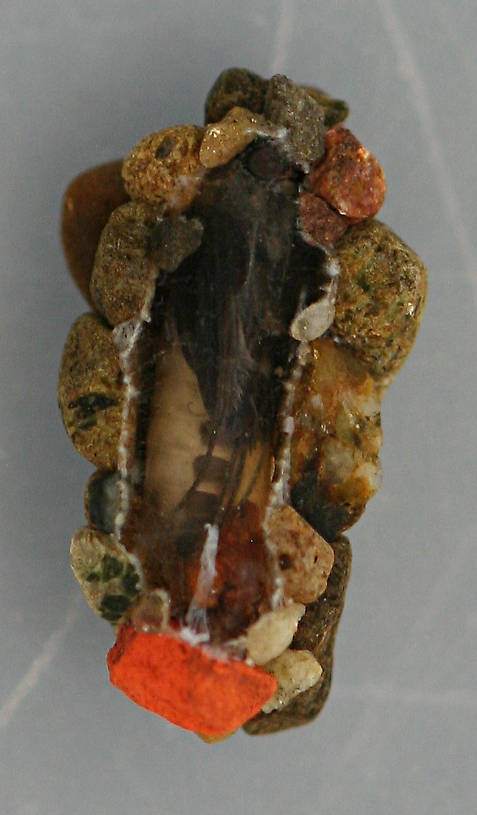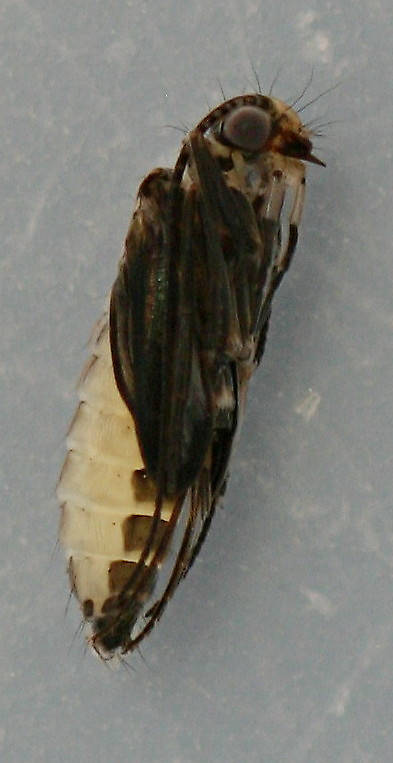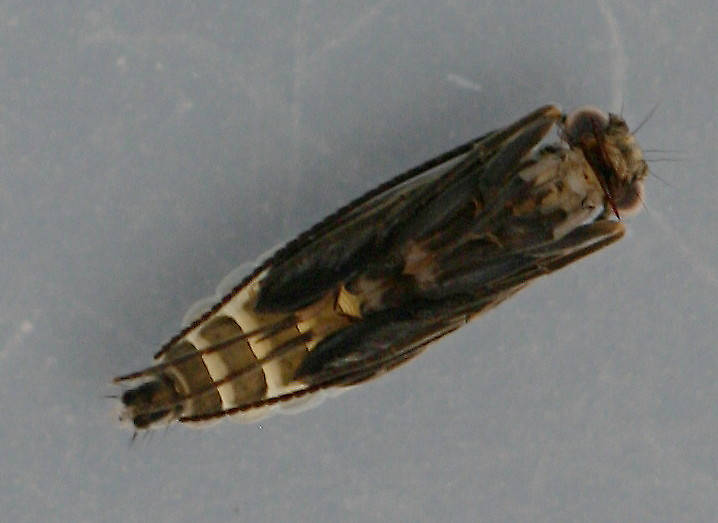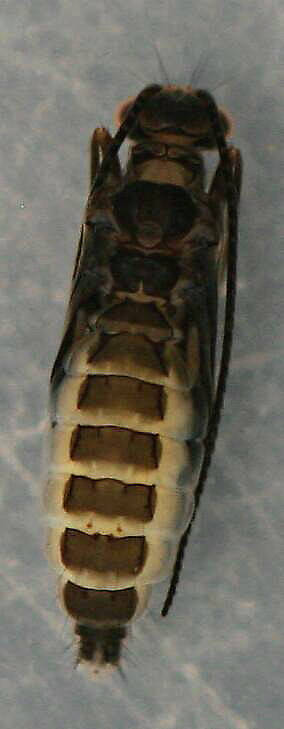Blog & Latest Updates
Fly Fishing Articles
Insects by Common Name


> > Chimarra larvae and pupae
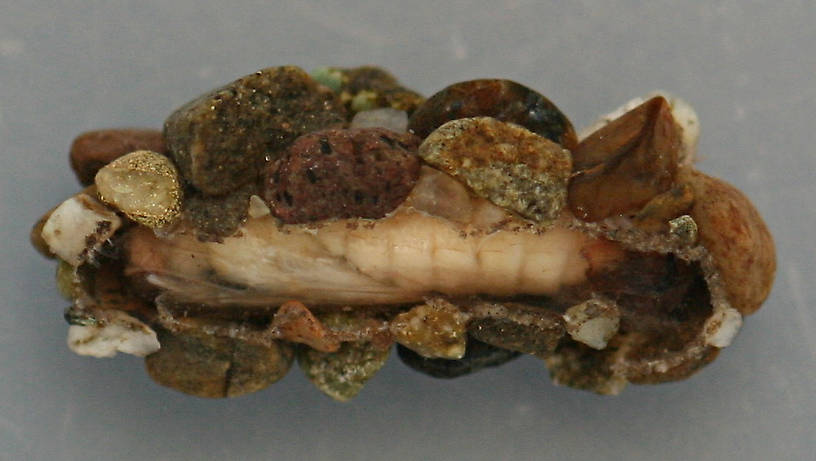
Ventral view, case of early pupa. Case 10 mm. Pupa 8.5 mm. August 16, 2014. Live specimen.
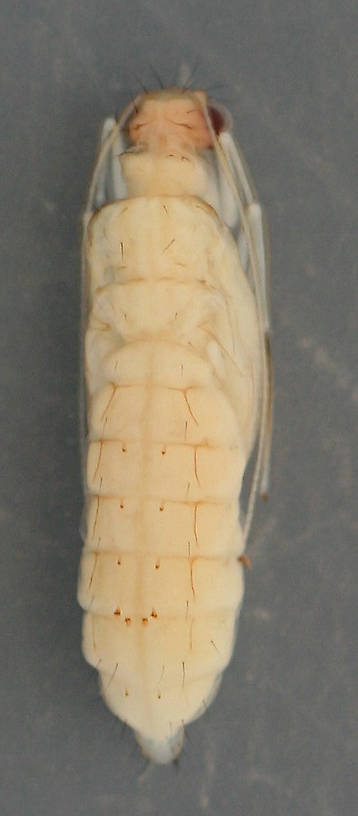
Dorsal view of early pupa from case above. In alcohol. Coloring about the same as live specimen. August 16, 2014.
| Millcreek | August 16th, 2014, 8:20 pm | |
| Healdsburg, CA Posts: 356 | There's been a fairly large emergence of Chimarra here over the last few days so I thought I'd try and document some of the larval and pupal stages. The larvae were identified to genus using Merritt. Cummins and Berg (2008). Pupae were identified to family with MCB. Association between larvae and pupae was done by identifying the prepupa as Chimarra using the extension on the forecoxa and the asymmetrical notch at the front of the head. Pupae were associated by the same features in the sclerites contained in the pupal cocoon. Don't know the species. I've collected some adults but haven't gotten around to attempting to identify them to species. Anyway, here's way more photos than you probably want to see. | |
| Entoman | August 16th, 2014, 11:47 pm | |
| Northern CA & ID Posts: 2604 | Never too many photos, Mark! :) Your pupa photos are the best I've seen of these little guys... Look for a projection on the clasper's dorsal margin. My suspicion is there is one, which would point to C. utahensis. I believe it's the only species I've run into on our trout waters out here. They're very common in many places but rarely (if ever) important in my experience. This time of year you can bust them out of the damp riparian bushes at the margins, but never seem to see them on the water. | |
| "It's not that I find fishing so important, it's just that I find all other endeavors of Man equally unimportant... And not nearly as much fun!" Robert Traver, Anatomy of a Fisherman | ||
| Lastchance | August 17th, 2014, 7:43 am | |
| Portage, PA Posts: 437 | I really enjoy all of the great photographs on this site. They are very helpful. | |
| Millcreek | August 17th, 2014, 10:16 am | |
| Healdsburg, CA Posts: 356 | Kurt - I'll Keep C. utahensis in mind when I check out the adults. Don Burdick's site has some great illustrations of Trichoptera genitalia drawn by Shannon Bickford which include several species of Chimarra from California. Whichever species they are you're right about them being very common. The adults are thick on streamside bushes right now, especially in the early morning. I've netted them low on the water in the evening, mostly females so I suspect they're in the process of laying eggs. Seems like fish would take advantage of them in the larval stage if they're part of the drift and I imagine the pupae would be vulnerable when they emerge but it would probably just be luck to happen upon them then. As to the photos, they could be better, the pupae seem to be either too light or to dark (depending on the developmental stage) to get really good detail. I'm going to have to fiddle with lighting. I usually just photograph them in natural light (something there's usually plenty of in California). Bruce - Looks like a sulphur to me. | |
| Entoman | August 17th, 2014, 10:33 am | |
| Northern CA & ID Posts: 2604 | Low on the water or low over the water? I've observed the latter many times but don't remember the former. As for the pupae, you may be right. Small dark attractor nymphs are as effective as anything else this time of year when nothing else is going on. My suspicion is they trickle off most of the day rather than engaging in mass emergencies that would tend to get the fish honing in on them. They are usually competing with other species for Mr. Trout's attention as well which is another important factor. Out West the Spotted Sedges, late Grannoms, Saddle Case larvae and a few others usually take center stage. | |
| "It's not that I find fishing so important, it's just that I find all other endeavors of Man equally unimportant... And not nearly as much fun!" Robert Traver, Anatomy of a Fisherman | ||
| Millcreek | August 17th, 2014, 10:47 am | |
| Healdsburg, CA Posts: 356 | Low on the water or low over the water? Low over the water. I've never seen them on the water. | |
| Martinlf | August 19th, 2014, 12:27 am | |
Moderator Palmyra PAPosts: 3233 | Gorgeous photos! Thanks. | |
| "He spread them a yard and a half. 'And every one that got away is this big.'" --Fred Chappell | ||
| Feathers5 | August 19th, 2014, 8:49 am | |
| Posts: 287 | I bet an imitation wax worm would do the trick for these guys. | |
| Millcreek | August 25th, 2014, 1:00 pm | |
| Healdsburg, CA Posts: 356 | Louis-Gorgeous photos! Thanks. Glad you enjoyed them. Feathers5- I bet an imitation wax worm would do the trick for these guys. I think it might work well providing the size and coloration were right. Actually, those might work well imitating a lot of caddisfly pupae. | |
Quick Reply
You have to be logged in to post on the forum. It's this easy:
Related Discussions
| Title | Replies | Last Reply |
| Re: Ochrotrichia tenuata (2 more) In the Photography Board by Millcreek | 1 | May 10, 2015 by PaulRoberts |
| Onocosmoecus larvae and cases (3 more) In the Photography Board by Millcreek | 0 | |
| Re: Help identifying? In the Identify This! Board by Doublezz105 | 3 | Jul 9, 2007 by Taxon |
| Re: Caddis: without case In the Identify This! Board by Dryfly | 4 | Mar 20, 2007 by GONZO |
| Capnia umpqua (2 more) In the Photography Board by Millcreek | 0 | |
| Re: please help.what larvae is this In the Identify This! Board by Alvin | 2 | Apr 7, 2012 by Crepuscular |
| Re: Hydropsychid? In Hydropsyche Caddisfly Pupa by GONZO | 14 | May 7, 2009 by LittleJ |
| Re: Neophylax larvae and pupae (9 more) In the Photography Board by Millcreek | 3 | Nov 27, 2014 by Millcreek |
| Re: Apatania larvae and pupae In the Photography Board by Millcreek | 3 | Feb 22, 2016 by PaulRoberts |
| Re: Interesting clinger species In the Identify This! Board by CalebBoyle | 7 | Mar 31, 2007 by GONZO |
Troutnut.com is copyright © 2004-2024 Jason
Neuswanger (email Jason). See my FAQ for information about use of my images.
 privacy policy
privacy policy

